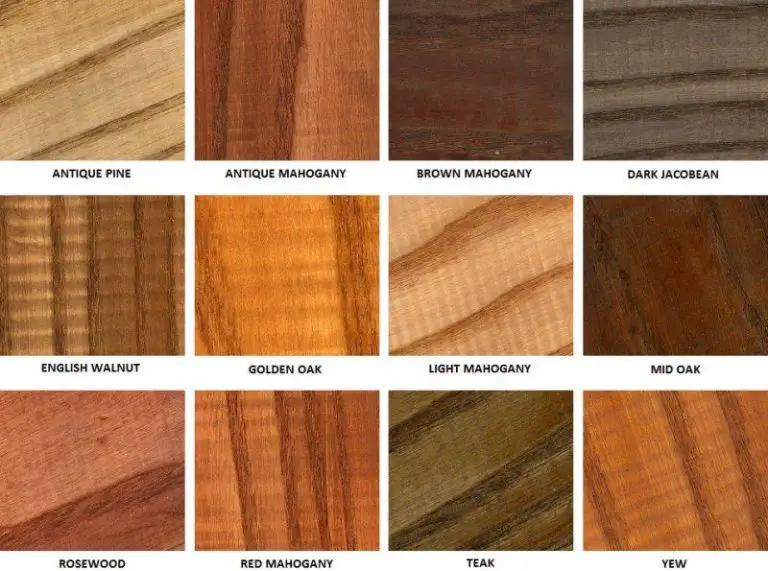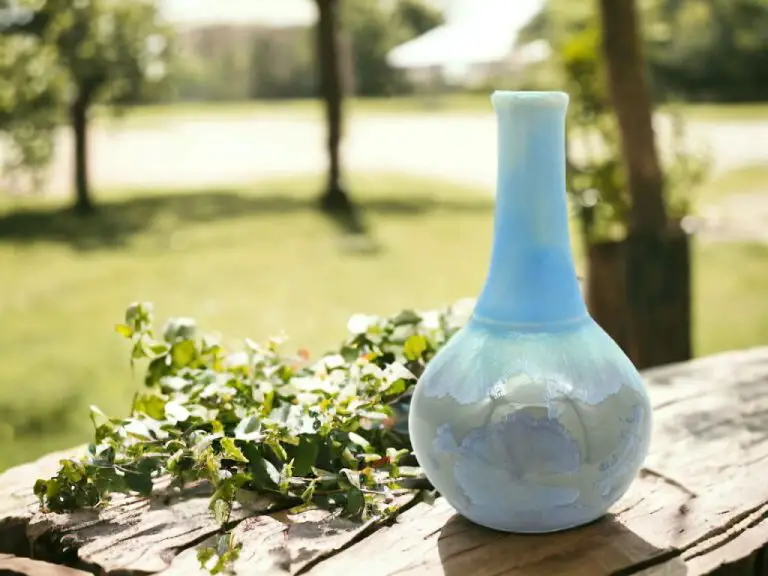How Much Clay Does It Take To Make A Mug?
Making a mug from clay is a common craft or art project. Before starting, it’s important to estimate how much clay you’ll need to complete the mug. Knowing the approximate amount of clay required allows you to prepare the right quantity ahead of time.
Estimating clay quantity for mugs can be tricky because there are several variables involved. The clay shrinks during the drying and firing process, so you have to start with more than just the size of the finished mug. The thickness of the mug walls also impacts the amount of clay required.
In this article, we’ll walk through the process of estimating the amount of clay needed to make a typical mug. We’ll look at the properties of clay, weight of finished mugs, the clay-to-mug process, clay shrinkage, and waste. With the right guidance, you can determine how much clay you’ll need for your next mug making project.
Clay Properties
The three main types of clay used for making mugs are stoneware, porcelain, and earthenware. Each has different properties that affect the mug-making process.
Stoneware clay is dense, non-porous, and vitreous. It can withstand repeated high temperatures and is suitable for functional pieces like mugs. Stoneware has medium plasticity, moderate shrinkage, and low porosity. It fires to a stone-like hardness around 2200°F.
Porcelain clay is very fine, dense, and white when fired. It has high plasticity but low shrinkage. Porcelain is fired up to 2400°F, resulting in a translucent, glass-like body that is harder and less porous than stoneware. However, it is also more brittle.
Earthenware clay is softer and more porous than stoneware and porcelain. It has high plasticity and high shrinkage. Earthenware fires at lower temperatures, around 1900°F. The finished product is opaque and absorbs water. Earthenware mugs require an interior glaze to make them functional.
The specific properties like plasticity and shrinkage affect how the clay is worked and how much is needed to create a mug of the desired size and shape.
Weight of Mug
The average weight of a ceramic mug can vary depending on several factors:
– Size – Larger mugs that hold more liquid will weigh more. A typical mug holds around 12-16 oz, but oversized mugs can hold 20 oz or more.
– Thickness – Thicker ceramic material will increase the weight. Standard mugs are around 3-5mm thick.
– Materials – Bone china or porcelain mugs tend to be lighter than stoneware or earthenware mugs.
– Handle design – Large, oversized handles can add extra weight compared to small handles.
– Base thickness – Heavier bases will make the mug weigh more overall.
The average ceramic coffee mug weighs around 10-16 oz or 300-450 grams empty. More premium mugs made of thicker stoneware or with handles/bases can weigh 16-20 oz or 450-550 grams.
Clay to Mug Process
The basic process for making a mug out of clay involves several key steps:
Wedging – Wedging is the process of kneading and working the clay to remove air bubbles and evenly distribute moisture. This helps prevent cracking and breakage later on. The clay should be wedged thoroughly before throwing.
Throwing – Throwing refers to using a pottery wheel to shape the mug. The clay is centered on the wheel and then pushed up into a cylinder shape by applying pressure with the hands and arms as the wheel spins. The sides of the mug are shaped using various techniques.
Trimming – Once the mug has been thrown and allowed to harden to a leather hard state, it is trimmed using special tools to refine the shape and create an even thickness. Excess clay is carefully cut away at this stage.
Drying – Before firing, the mug must be completely dried to remove all moisture from the clay. This is done slowly to prevent cracking. The drying process can take several days.
Glazing – Liquid glaze is applied to the bisque fired mug to create a glass-like coating. Glaze provides color and makes the mug nonporous. The mug is dipped in or brushed with glaze.
Firing – The mug is fired in a high temperature kiln which permanently hardens the clay and bonds the glaze to the surface. There are multiple firings at different temperatures required to fully complete the mug.
Clay Waste
Even with careful preparation, clay is lost throughout the process of making a mug. There are several steps
of the process where some clay goes to waste:
Wedging – During wedging, a small amount of clay can get stuck to the table or wedging board and is left behind. Experienced potters are careful, but expect to lose around 5% of the clay to wedging.
Throwing – As the clay is centered and shaped on the pottery wheel, excess clay is trimmed and cut away. Trimmings fall off the wheel. Depending on the skill of the potter, 5-15% of clay can be lost during throwing.
Trimming – Once the mug form is complete, trimming the bottom and smoothing the sides causes more clay to be cut off and discarded. Trimming results in a further 5-10% clay loss.
Added together, the waste from the clay preparation, wheel throwing, and trimming stages means 15-30% extra clay must be used relative to the finished mug’s weight. Experienced potters aim for minimum waste, but some loss is inevitable.
Clay Shrinkage
One of the key properties of clay is that it shrinks as it dries and is fired. The shrinkage rate can vary significantly depending on the type of clay body used. For example, stoneware clays may shrink 10-15% from the wet stage to the fired stage, while porcelain clays can shrink over 20%.
It’s important for potters to test and calculate the shrinkage rate of their clay bodies. This is done by measuring a small sample of clay when wet, allowing it to dry completely, measuring it again in the dry state, then firing it and measuring after firing. The differences between the wet, dry, and fired measurements determine the overall shrinkage percentage.
Understanding the specific shrinkage rate allows potters to plan the initial size and shape of their pieces appropriately. If the clay shrinks too much, finished pieces can warp or crack. With the right testing and calculations, potters can account for shrinkage and achieve the desired size and shape after firing.
In general, a good starting point is to estimate 10-15% shrinkage from the wet clay stage to the finished fired mug. However, careful testing of the specific clay body is advised.
Estimating Clay Needed
To estimate the amount of clay needed to make a mug, you need to consider several factors:
Mug Weight – The average ceramic mug weighs around 350-450g when finished. For this estimate, let’s assume our target mug weight is 400g.
Clay Waste – There is always waste clay when throwing on the wheel. Experienced potters estimate around 20% waste. So for a 400g mug, we need to account for 80g of clay waste.
Clay Shrinkage – Clay shrinks during the drying and firing process. For stoneware clays, expect around 12% linear shrinkage. This means the mug will be 12% smaller in all dimensions after firing. We need to account for this shrinkage when estimating the clay needed.
Factoring in these elements, here is a sample calculation:
Target mug weight: 400g
Add 20% for clay waste: 400g x 1.2 = 480g
Account for 12% shrinkage: 480g / 0.88 = 545g (0.88 is 100% minus 12% shrinkage)
Therefore, to account for waste and shrinkage, you would need about 545g of clay to end up with a 400g fired mug. This allows for 80g of clay waste and about 65g of shrinkage during drying and firing. For most stoneware mugs, 500-600g of clay is a good starting estimate.
Recommendations
When making mugs out of clay, there are some tips to help reduce clay waste and minimize shrinkage during firing:
Tips for reducing clay waste
Clay is an expensive material, so minimizing waste is important for keeping costs down. Here are some tips:
- Make templates – Cut out cardboard templates in the shape of your mugs. Use these to cut clay slabs accurately and consistently.
- Recycle trimmings – Leftover clay from cutting slabs can be recombined, wedged, and reused.
- Buy clay in bulk – Larger bags are more economical. Share extra clay with other potters.
- Store clay properly – Keep it sealed in plastic to avoid drying out. Rehydrate with water if needed.
Best clay types to minimize shrinkage
Shrinkage during firing can ruin mug shapes and handles. Choose clay bodies with lower shrinkage:
- Stoneware – Shrinks around 8-11%. Low-to-moderate shrinkage rate.
- Porcelain – Shrinks only around 5-8%. Very low shrinkage.
- Earthenware – Shrinks approximately 4-10%. Overall quite stable.
Avoid high-shrinkage clays like terracotta whenever possible. Test unknown clays to determine shrinkage before committing to a project.
Conclusion
So in summary, the amount of clay needed to make a mug can vary quite a bit depending on the size and style of the mug, as well as factors like the type of clay used and how much shrinkage occurs during firing. However, a good estimate is around 1/2 to 3/4 pounds of clay per mug. Understanding how different clays shrink at various temperatures is important when estimating the starting amount of clay needed. Knowing the general properties of clay bodies helps potters calculate how much clay to use when throwing specific pieces. With some testing and experience, potters can dial in more precise clay weights for their process and desired mug sizes. But for most basic stoneware clay mugs made on the pottery wheel, starting with around 1/2 to 3/4 lbs of clay is a safe estimate.
The clay-to-mug process involves wedging, centering, opening, pulling, final shaping, handles, spouts, drying, firing, and glazing. There is clay waste at each step – wedging, throwing, trimming, glazing, etc. The clay also shrinks during drying and firing. Understanding how clay properties factor into the mug making process helps determine the clay needed to end up with a finished mug after all the steps. With testing and experience, potters can fine tune the starting amount of clay required for any specific mug design.
References
Pottery Making Illustrated. “Calculating Clay Shrinkage.” Accessed March 1, 2023.
Ceramic Arts Network. “How to Throw a Basic Cylindrical Mug.” Accessed March 1, 2023.
The Clay Studio. “Estimating Clay Needs for Production.” Accessed March 1, 2023.
Ceramics Monthly. “Preventing Clay Waste.” Accessed March 1, 2023.
The American Ceramic Society. “Standard Weights for Ceramic Ware.” Accessed March 1, 2023.




